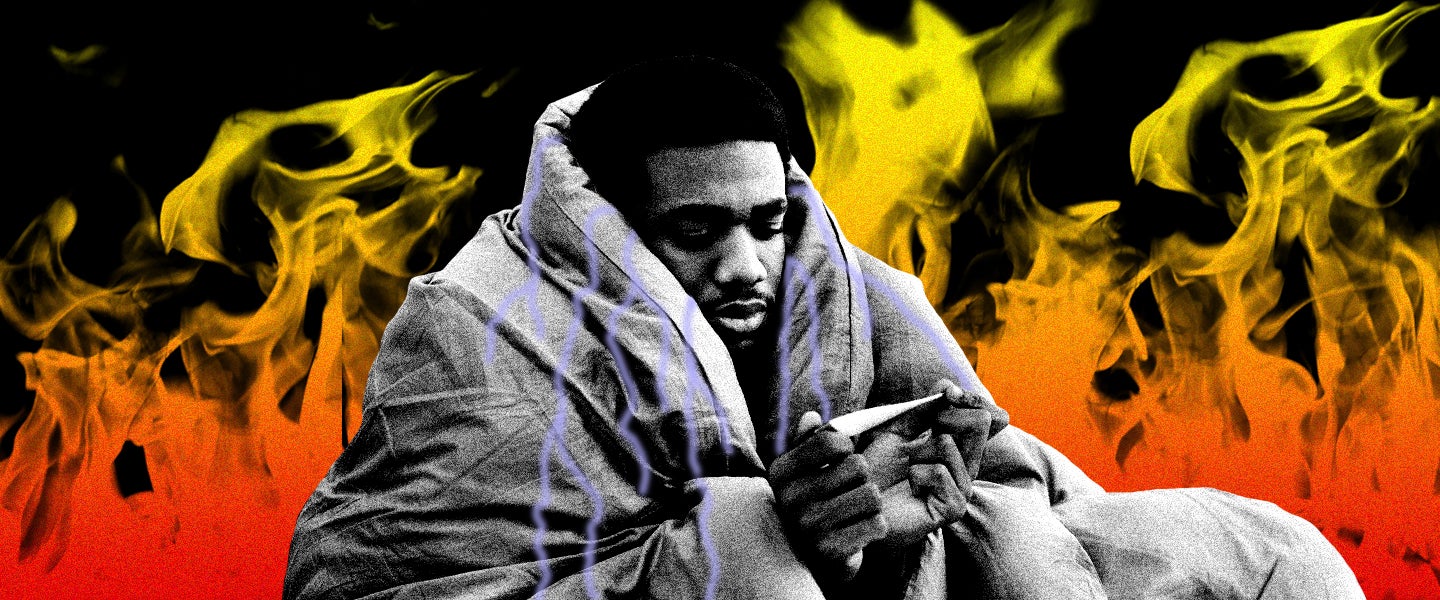I want to beat the shit out of whoever invented the phrase “starve a cold, feed a fever” — same goes for the inverse, “feed a cold, starve a fever.” Like hey, I know your head feels like a leaky water balloon, but you know what will really improve the whole experience? Denying your basic need for food. Honestly, fuck off.
The biggest problem with the phrase, though, is that it’s only half true: You should feed both a cold and a fever. The exact phrase is often switched back and forth — some say you should starve a cold, others say you should starve a fever. The unreliability of the phrase alone should be enough for you to toss it in the trash. The general idea, though, is that sicknesses heal better when one is either adequately fed or when one is running on empty.
But in reality, your caloric needs increase when you’re sick with a cold or fever, whether you’ve got a regular bug or the coronavirus itself. With a fever in particular, your body burns even more calories than usual. Exactly how many more calories is hard to say — it all depends on how high your fever is, your regular metabolism and your weight.
Your daily caloric needs can be calculated using your “basal metabolic rate,” which factors in your age, height, weight and activity level. This rate gives an estimate of how many calories your body burns per day at rest doing its normal functions. An article cited by LiveStrong suggests that for every .5 degree Celsius increase in body temperature, your basal metabolic rate increases by around 7 percent. Half a degree Celsius translates to just under a degree Fahrenheit, meaning your caloric needs could hypothetically increase by 14 percent or more if you have a fever.
There isn’t, however, much published scientific evidence to confirm these exact numbers — the general consensus among medical professionals is simply that your body does indeed require more calories when fighting a fever. “When you have a fever, it’s essentially increasing your body’s temperature to fight an infection, and in turn, also increasing your metabolism and your body’s use of calories,” Albert Ahn, a clinical instructor of internal medicine at NYU Langone Health, told Health. “Hence, you would likely benefit from more caloric intake during a fever.”
The problem with calculating exactly how many more calories your body burns while feverish is that measuring your caloric intake shouldn’t be your concern while you’re sick. A fever shouldn’t be treated like a weight-loss method: Significant calorie restrictions can actually weaken your immune system, making you more susceptible to illnesses and less capable of quickly healing from them.
That said, it’s often a struggle to get food down when you’re sick. You might not have any appetite, or may even find that food simply won’t stay inside you for very long. In these cases, there’s no need to stress about forcing food into your system. It’s more important to stay hydrated, particularly if you’re experiencing diarrhea or vomiting and therefore expelling fluids more rapidly. Drinking plenty of fluids helps our body recover from the dehydrating effects of a fever and helps loosen mucus in our respiratory system, which helps flush out germs.
So you might find that you’ve lost weight after a bout of a cold or flu, but you’ll probably gain it back shortly — like any crash diet, the results are usually temporary.
Bottom line, your body would like to be fed more when it’s sick. If you’re hungry, great. If not, it’s not anything to be too anxious over. Either way, thinking too much about calories in versus calories out while you have a fever misses the point: Focus on healing, not dieting.

